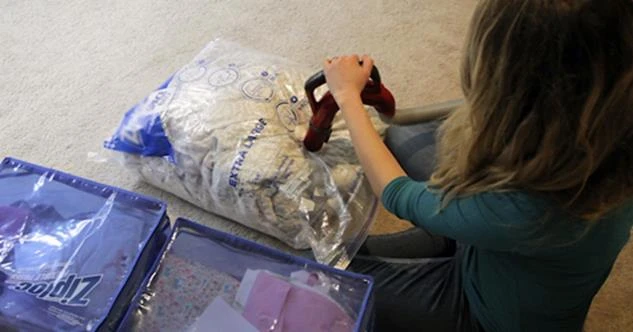
Molly Maid offers these expert tips for packing clothes for storage to keep garments fresh and damage-free.
|
As the seasons change so does your wardrobe, but keeping a full year’s worth of clothing in one closet can really hamper your style. Items that are packed too tightly can become wrinkled, soiled, or smell stale due to lack of air movement, so we have a solution that can help free up space while protecting your valuable garments. The best way to store clothes during the offseason in the attic, basement, or anywhere else you have some extra space is included in this post.
What Can Go Wrong?
Whether you’re storing your clothes for a move, over the seasons, or for the long term, improper techniques can cause damage to fabrics. Issues may include:
- Damage from insects or rodents
- Mold or mildew
- Fading
- Fabric deterioration
- Permanently set stains
- Unexplained odors
- And more!
The Best Way to Store Clothes
Start Fresh
Launder clothing prior to storage, making sure to remove any stains and dry thoroughly. In addition to having clean fresh clothing upon unpacking, taking the time to perform this vital step now will prevent stains from taking hold while removing organic materials, insects, or eggs which can cause damage to fabrics.
Use the Right Materials
When it comes to clothes storage, not all materials are created equally. Used cardboard boxes may contain insect eggs or larvae, trapped odors, or traces of liquids or solids which may cause staining. Plastic bins are a better alternative, but make sure clothing and bins are clean prior to packing.
Spare the Hangers
Avoid metal hangers at all costs, which may rust or stretch out fabrics. Fold items like sweaters, shirts, and pants, and save your sturdy wooden or plastic hangers for heavy items like outerwear. Store hung items in high-quality garment bags for best results.
Keep Your Clothing Dry
Moisture is the enemy, which may cause mold or mildew to grow and spread. Store clothing in a clean, dark, cool, dry environment when possible, and avoid using cardboard for long-term storage which soaks up humidity like a sponge.
Beware of Moths
Moths are a genuine concern and should be considered when pondering how to store clothes in the attic or basement. While mothballs can be effective, they can be dangerous to children or pets and leave your clothes smelling unpleasant. Cedar balls or blocks are a better option, though it’s important to consider that a high concentration of cedar is required to be an effective repellant.
Short-Term vs. Long-Term Storage
Packing your clothes for a move utilizes different criteria than those which will be stored for several months to a year or longer. Clean cardboard boxes may be used for short-term storage if they are placed in a dry, pest-free area. For a space-saving alternative consider placing several clean items in air-tight vacuum bags, although this method is not recommended for use longer than one year. Cedar-lined closets are ideal for hung items for long or short-term use.
Get Organized
For seasonal storage of clothing, label containers well and pull them out several weeks to a month in advance to give yourself sufficient time for cleaning and airing. This will also prevent you from being caught off guard in the event of unexpected weather, and allow you time to prepare the previous season's clothing by washing or dry cleaning.
Molly Maid can help with the cleaning and organization of every room in your home. Contact your local Molly Maid for a free in-home estimate.
